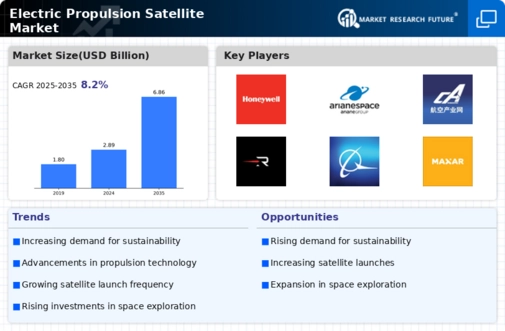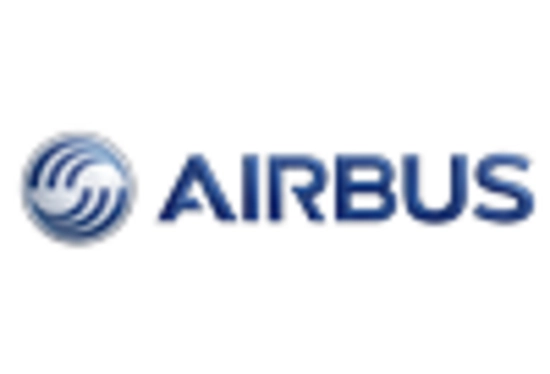The Electric Propulsion Satellite Market is currently characterized by a dynamic competitive landscape, driven by advancements in technology and increasing demand for efficient satellite propulsion systems. Key players such as Airbus (France), Boeing (US), and Lockheed Martin (US) are strategically positioning themselves through innovation and partnerships. Airbus (France) has focused on enhancing its electric propulsion capabilities, while Boeing (US) is leveraging its extensive experience in aerospace to develop next-generation propulsion systems. Lockheed Martin (US) is also investing in research and development to improve satellite efficiency, indicating a collective emphasis on technological advancement that shapes the competitive environment.
In terms of business tactics, companies are increasingly localizing manufacturing and optimizing supply chains to enhance operational efficiency. The market appears moderately fragmented, with several key players exerting influence over various segments. This fragmentation allows for a diverse range of offerings, yet the collective strategies of major companies like Northrop Grumman (US) and Thales Alenia Space (France) suggest a trend towards consolidation and collaboration, particularly in the realm of electric propulsion technologies.
In August 2025, Northrop Grumman (US) announced a partnership with a leading technology firm to develop a new electric propulsion system aimed at reducing satellite launch costs. This strategic move is significant as it not only enhances Northrop Grumman's technological capabilities but also positions the company as a leader in cost-effective satellite solutions, potentially reshaping market dynamics.
Similarly, in September 2025, Thales Alenia Space (France) unveiled a new electric propulsion module designed for small satellites, which is expected to improve maneuverability and extend operational lifetimes. This innovation reflects Thales's commitment to addressing the growing demand for small satellite applications, thereby reinforcing its competitive stance in the market.
Moreover, in October 2025, Boeing (US) revealed its plans to integrate artificial intelligence into its satellite propulsion systems, aiming to optimize performance and reliability. This initiative underscores the increasing importance of AI in enhancing operational efficiencies and could set a new standard for future satellite technologies.
As of October 2025, the Electric Propulsion Satellite Market is witnessing trends that emphasize digitalization, sustainability, and the integration of advanced technologies. Strategic alliances among key players are shaping the competitive landscape, fostering innovation and collaboration. Looking ahead, it is likely that competitive differentiation will increasingly pivot from price-based strategies to a focus on technological innovation, reliability, and supply chain resilience, as companies strive to meet the evolving demands of the market.


















Leave a Comment